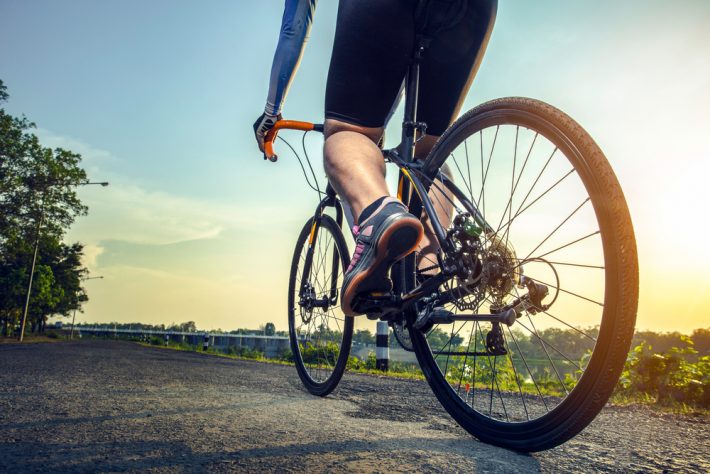
Cycling isn’t a contact sport, but as any serious cyclist can tell you, this sport is extremely demanding. Endurance, technique, agility and strength – all are essential for cycling. Consider that cyclists also need to remain hunched forward and perform repetitive motions, and it’s no surprise that injuries can happen.
Whether you’re a weekend warrior, a work commuter or a competitive racer, it’s a good idea to learn about common cycling injuries and how physiotherapy can help keep you in the saddle.
Common Cycling Injuries
Knee Pain
Knee pain is one of the most common cycling injuries. There are numerous causes for knee pain in cycling, but the most frequent complaint is kneecap pain as a result of overuse. Long rides can cause the kneecap to become inflamed thanks to tightness or weakness in the surrounding muscles. In more serious cases, the kneecap can rub on the bone behind it, irritating and inflaming the cartilage at the back of the kneecap.
Hand Pain
Hand pain is very common in cycling. The most common cause of hand pain is Ulnar Neuropathy, which usually results from keeping the hands in the same position for a long period of time. Ulnar Neuropathy often results in a tingling or numbing sensation in the hands – especially around the fingers.
Neck Pain
Poor cycling form can cause hyperextension of the neck muscles. This is especially common during and after long rides.
Back Pain
The hunched-over position in cycling can stretch the ligaments in the lower back, and even cause them to strain. Injuries to the muscles and nerves in the lumbar and other areas of the back can result.
Physiotherapy for Cyclists
All of these common cycling injuries can be avoided, treated and possibly even permanently corrected with physiotherapy.
For the best help, you’ve got to see a physio, but here are a few hints as to what to do about some of these common injuries:
- Address your posture for hand pain. You may be putting too much of your weight on your hands.
- R.I.C.E. treatment for knee pain, followed by diagnosis and evaluation from a physiotherapist
- For back pain, exercises that flex and strengthen your back muscles can help
- For neck pain, exercises that flex and strengthen your neck muscles can help
Have you physiotherapist check your bike setup to optimise posture, seat height and technique.
Because each injury and each rider is different, the number one solution for a cycling injury is to see a physiotherapist. A licensed physio will properly diagnose you, plan your road to recovery, give you advice on form, and help you avoid injury in the future.
Want to Cycle Without Worrying About Injury? We can Help
Whether you need advice on proper form, knee pain treatment, or a whole training plan, we can help. Our staff offer the local customer service and special attention you’d expect from an experienced team that really cares about its clients.
We are located in Morley, so if you need physiotherapy in Inglewood, or any of the other Eastern Suburbs, we hope you’ll look us up.
